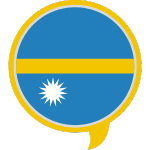Exploring the Experiences of YouTubers Who Visited Nauru
Nauru is a tiny island nation located in the Pacific Ocean, with a population of just over 10,000 people. Despite its size, Nauru has been a focus of international attention in recent years due to its treatment of refugees and asylum seekers. In 2013, the Australian government began sending asylum seekers who arrived by boat to detention centers on Nauru and Papua New Guinea’s Manus Island. Since then, there have been numerous reports of human rights abuses and poor living conditions in the detention centers.
Against this backdrop, several YouTubers have visited Nauru in recent years to document their experiences and shed light on the country’s situation. Let’s explore the motivations for their visit, their impressions of Nauru and its people, the impact their visit had on their audience, and any controversies that arose as a result.
Which YouTubers Visited Nauru?
One of the most well-known YouTubers to visit Nauru is Casey Neistat, a popular American vlogger and filmmaker. In 2018, Neistat traveled to Nauru with the United Nations High Commissioner for Refugees (UNHCR) to learn more about the situation of refugees and asylum seekers on the island.
Another YouTuber who visited Nauru is Hasan Piker, a political commentator and journalist. In 2019, Piker traveled to Nauru to report on the conditions in the detention center and interview some of the asylum seekers.
What Were the Goals of Their Visit?
Neistat’s visit to Nauru was part of his work with the UNHCR to raise awareness about the global refugee crisis. In a video he posted on his YouTube channel, Neistat explained that he wanted to “show the world what’s happening here [in Nauru] and how it’s affecting the lives of people who have already been through so much.”
Piker’s visit to Nauru was more focused on investigating the conditions in the detention center and reporting on the experiences of the asylum seekers. In a video he posted on his YouTube channel, Piker explained that he wanted to “shed light on the reality of what’s happening here and the people who are being directly affected by it.”
Initial Impressions and Interactions with Nauru and Its People
Both Neistat and Piker were struck by the small size of Nauru and the contrast between its natural beauty and the detention center’s stark conditions. Neistat commented in his video that “it’s hard to reconcile the beauty of the island with the misery and despair that exists here.” Piker similarly noted that “it’s hard to believe that people are being held in detention centers on an island as beautiful as this.”
Both YouTubers also had interactions with the local people and government officials. Neistat met with the president of Nauru and visited a school where he spoke to students about the importance of education. Piker interviewed several asylum seekers and also spoke to local activists and journalists.
Impact on Audience and Controversies
Neistat’s video about his visit to Nauru has been viewed over 2.7 million times and has helped to raise awareness about the situation of refugees and asylum seekers on the island. The video includes interviews with several refugees and asylum seekers who describe the harsh conditions in the detention center and the toll it has taken on their mental health.
Piker’s video about his visit to Nauru has been viewed over 900,000 times and has also helped to raise awareness about the situation on the island. The video includes interviews with several asylum seekers who describe the physical and mental abuse they have suffered in the detention center.
Both YouTubers faced some controversies and criticisms during their visits to Nauru. Neistat’s visit, in particular, was criticized by some for being too closely tied to the UNHCR, which some felt was not doing enough to address the situation on Nauru. Others criticized Neistat for portraying Nauru as a “paradise” in some parts of his video, which they felt downplayed the severity of the situation.
Piker’s visit was also controversial, as he was reportedly detained by Nauruan authorities and accused of violating the country’s immigration laws. Piker denied the allegations and claimed that he was being targeted for reporting on the situation in the detention center.
In response to these controversies, both YouTubers defended their actions and reiterated their commitment to raising awareness about the situation in Nauru. They also highlighted the importance of free speech and the need for independent reporting on the issue.
Conclusion
The experiences of YouTubers who have visited Nauru have helped to shed light on the situation of refugees and asylum seekers on the island. Their videos have reached millions of viewers and have sparked important discussions about human rights and government policies. Despite facing some controversies and criticisms, these YouTubers have continued to use their platforms to raise awareness about the situation in Nauru and to advocate for change.
